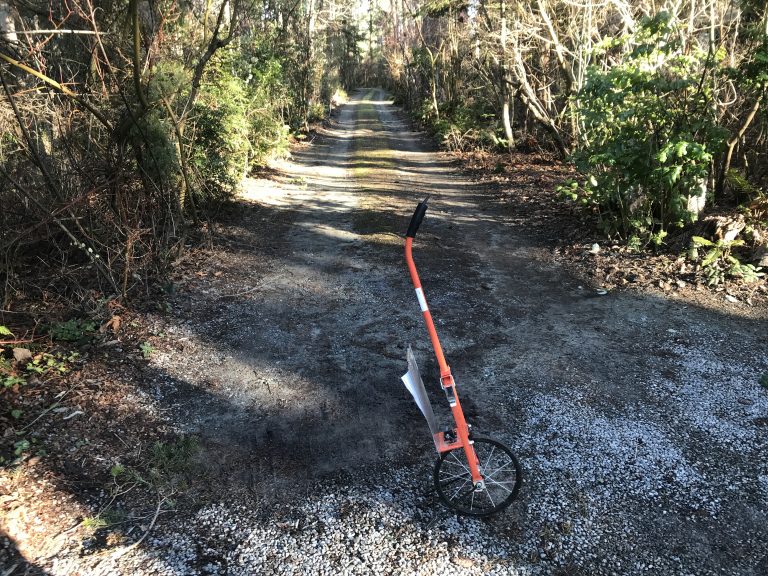
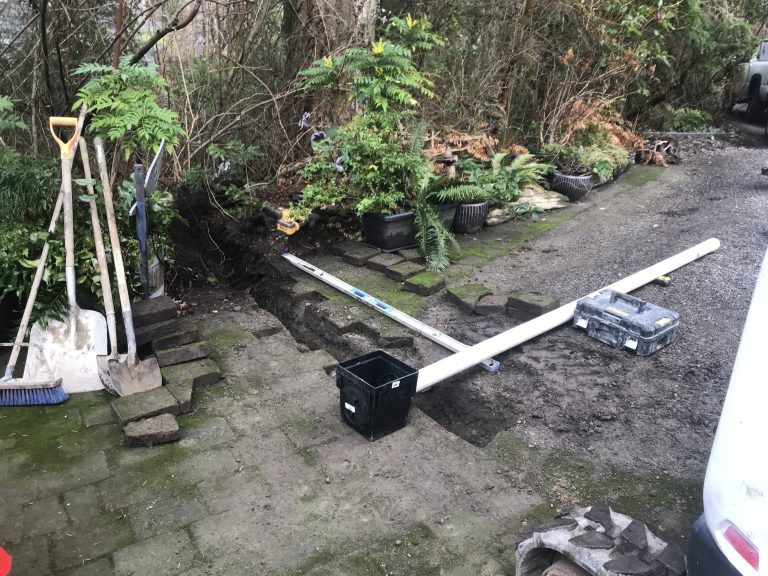
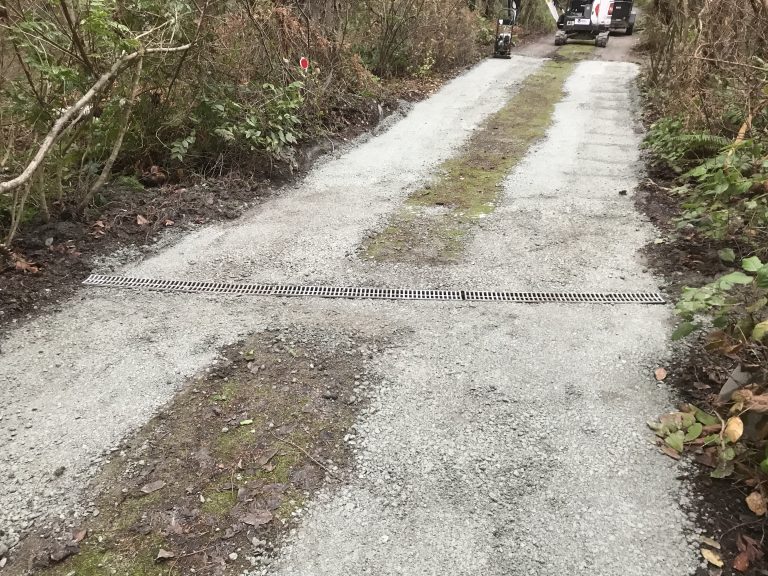
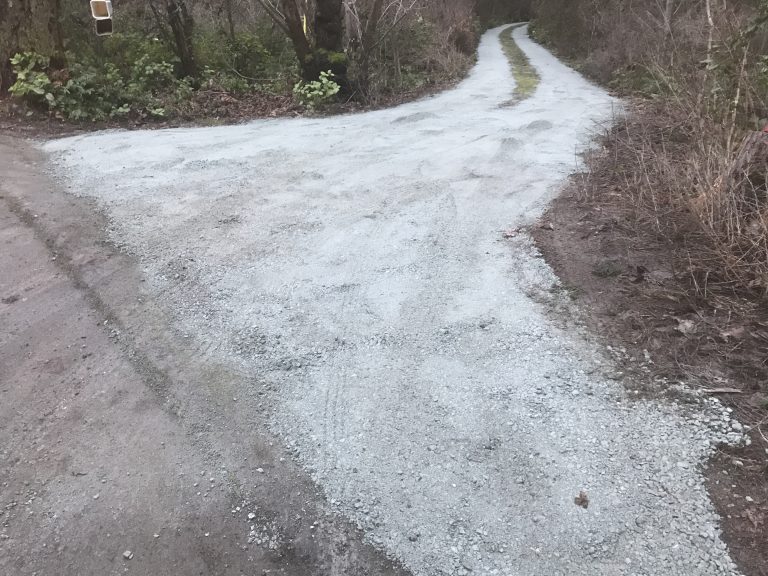
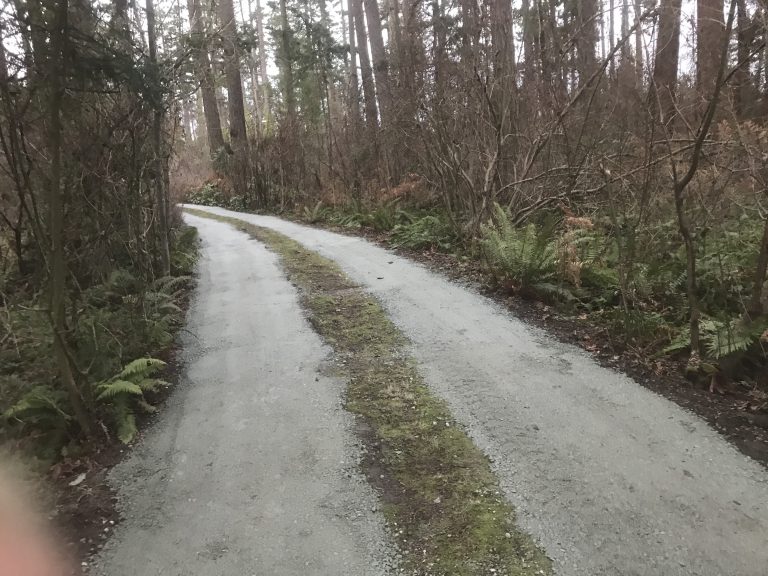
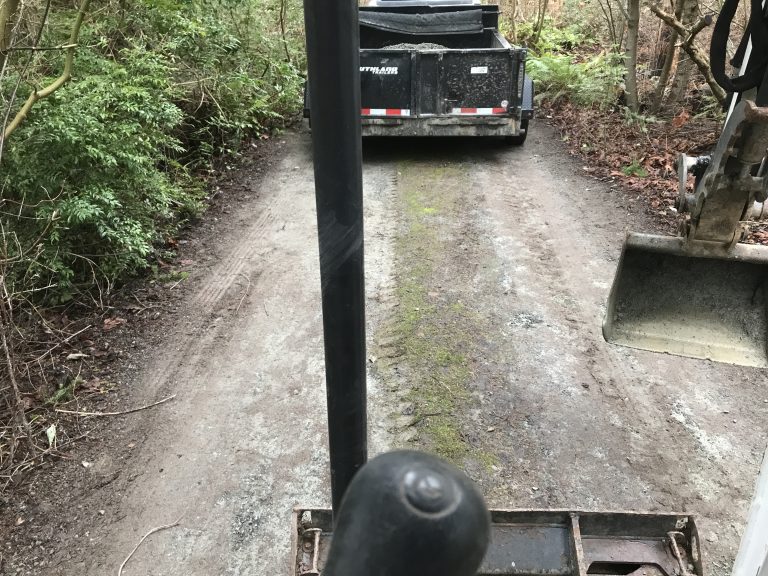
Gravel Driveway Revitalization and Renewal
This driveway had previous gone decades without any major work done. As a result, deep ruts had developed in the roadway. Near the mouth where it meets with the road, some areas were a foot difference in height. Additionally, there were some drainage problems due to the grade of the overall terrain including the driveway.
Clearly what needed to be done was a top up of the gravel. Additionally, the existing channel drain installed by the owners needed to be brought up to grade since with the additional gravel, it would be too far below grade causing a very unseemly look and uncomfortable drive. Another drain closer to the house was also suggested since water had been making it to the house still uncomfortably close.
The main challenges with this gravel installation was that not only was this one of the longest driveways we’ve ever worked on, at around 400 ft, but there was a moss covered median section along almost the entire length that needed to be kept intact. As a result, one couldn’t just dump and scoot or really use a skid loader. Instead, gravel had to be gradually scooped out bucket by bucket with an excavator. Once the gravel was topped up, an aluminum bar was used to ensure the gravel was as level and smooth as possible to minimize bumps and hazards while walking and driving. The gravel was then compacted 2-3 times, helping it solidify into a stable surface that one can drive over. In total over 12.5 yards of road base gravel was used.
The existing channel drain was dug up, lifted, and then reinstalled, with the gravel on both sides tapered towards it. The area was then compacted to ensure there won’t be too much settling.
A large catch basin was installed at the house end of the driveway, which had been reported to be a low spot that water had congregated in the past. The pipe connecting the catch basin was then routed under the paver walkway to hide it, and the paver walkway was restored to its former condition. Since the entire system is gravity fed and has no moving parts, it should operate with minimal maintenance and last a long while.
As a final note, in the areas with the worst ruts, it was suggested by the owners that some grade be done in addition to topping up gravel, and this proved to be a great strategy as it improved the overall look and saved on some materials and time. The packed dirt that had formed the sides and tops of the ruts were scraped and then moved to the bottoms of the ruts. The entire surface was then compacted before gravel was added on top and per the other sections, leveled and compacted.
After all was finished, it was driven over a couple of times with a 7-8000 lb GVW vehicle to check for weak spots and major bumps or unevenness.